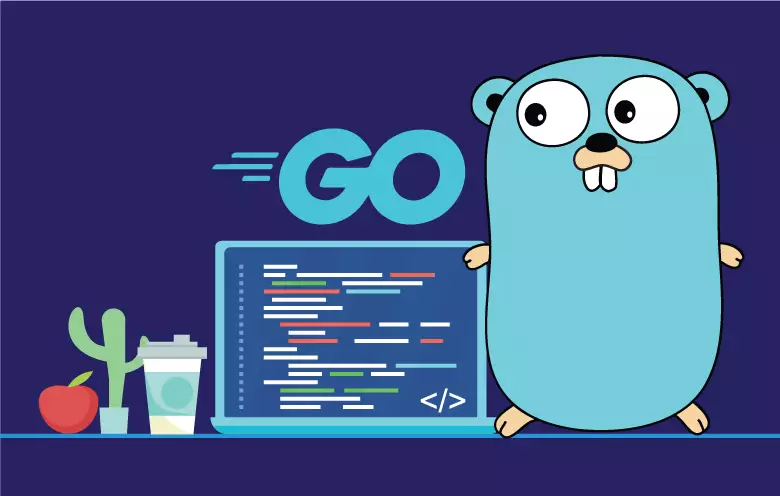An Introduction to Go (GoLang)
If you are looking for a programming language that can help you build simple, secure, and scalable systems, you might want to give Go a try. Read our Introduction to Go aka GoLang!

Go: A Modern and Powerful Programming Language
If you are looking for a programming language that can help you build simple, secure, and scalable systems, you might want to give Go a try. Go is an open-source programming language that was developed by Google in 2009. It is based on C and comes equipped with strict typing, memory management, concurrency, and a rich standard library. In this article, we will introduce some of the benefits and features of Go that make it a popular choice among developers.
Benefits of Using Go
Go has many advantages over other similar coding languages. Here are some of them:
- Quick compilation and execution speed: Go has a fast compiler that produces native binaries that run directly on the target machine without needing a virtual machine (VM) or an interpreter. This means that Go programs can start up quickly and run efficiently without any overhead.
- Portability: Go supports cross-compilation, which means that you can compile your code on one platform and run it on another without any changes. This makes it easy to deploy your applications across different operating systems and architectures.
- Concurrency: Go has built-in support for concurrency using goroutines and channels. Goroutines are lightweight threads that can run multiple tasks simultaneously without blocking each other. Channels are communication pipes that allow goroutines to exchange data safely and synchronously. Concurrency enables you to write concurrent programs that are simple, elegant, and scalable.
- Interfaces: Go supports interfaces and duck typing, which allow you to write flexible and expressive code without worrying about inheritance hierarchies or explicit type conversions. Interfaces define a set of methods that a type must implement to satisfy the interface. Duck typing means that any type that implements those methods can be used as an interface value. Interfaces enable loosely coupled systems that are easy to test and maintain.
- Automatic garbage collection: Go handles memory management automatically by using a garbage collector (GC) that frees unused objects from memory. This prevents common errors such as memory leaks or buffer overflows. The GC also runs concurrently with your program, which minimizes its impact on performance.
- Memory safety: Go prevents unsafe operations such as pointer arithmetic or accessing uninitialized variables by using strict type checking and bounds checking. This ensures that your code does not access invalid memory locations or corrupt data structures.
- Independent error handling: Go does not use exceptions for error handling but instead uses multiple return values where one of them is an error value. This forces you to check for errors explicitly at each point where they may occur. This makes your code more robust and less prone to unexpected failures.
Features of Go
Go has many features that make it easy to learn and use. Here are some of them:
- Simplicity: Go has a small and consistent syntax that is easy to read and write. It avoids unnecessary keywords, parentheses, semicolons, etc. It also follows some conventions such as formatting style (gofmt), naming style (camelCase), documentation style (godoc), etc. These conventions make your code more uniform
and clear. - Modularity: Go supports modularity by using packages as units of code organization. Packages group related types, functions,
variables , constants , etc . into namespaces . You can import packages from other sources using import statements . You can also create your own packages using modules , which specify dependencies , versions , paths , etc . Modularity helps you structure your code better
and reuse existing code easily . - Tooling: Go has a large ecosystem of tools that can help you with various aspects of development such as testing (go test), debugging (go debug), profiling (go tool pprof), formatting (go fmt), documentation (go doc), dependency management (go mod), etc. These tools are integrated with the language
and work seamlessly with your code . - Standard library: Go has a robust standard library that covers a wide range of domains such as networking , cryptography , compression ,
testing , reflection , math , time , etc. The standard library provides high-quality implementations of common functionalities
that you can use out-of-the-box without needing external libraries . - Resources: Go has a large community of developers who contribute to its development , maintenance , improvement ,
and promotion. You can find many resources online such as tutorials, books, blogs, podcasts, videos, courses, etc. that can teach you the basics or advanced topics of Go. You can also join online forums such as Stack Overflow, Reddit, Slack, Discord, etc. where you can ask questions, share ideas, and get feedback from other Go developers.
TLDR;
Go is a modern and powerful programming language that can help you build fast, reliable, and scalable applications. It has many benefits and features that make it a great choice for developers of all levels. Whether you are a beginner or an expert programmer, there is something for everyone in Go!
If you want to learn more about Go or start using it today, you can visit its official website where you can download it for free or use an online playground to run your code in your browser. You can also explore this blog where we will post more articles related to Go programming language. Stay tuned!
In the meantime why no go and checkout the Go website or even get started with the online tutorial before installing anything.